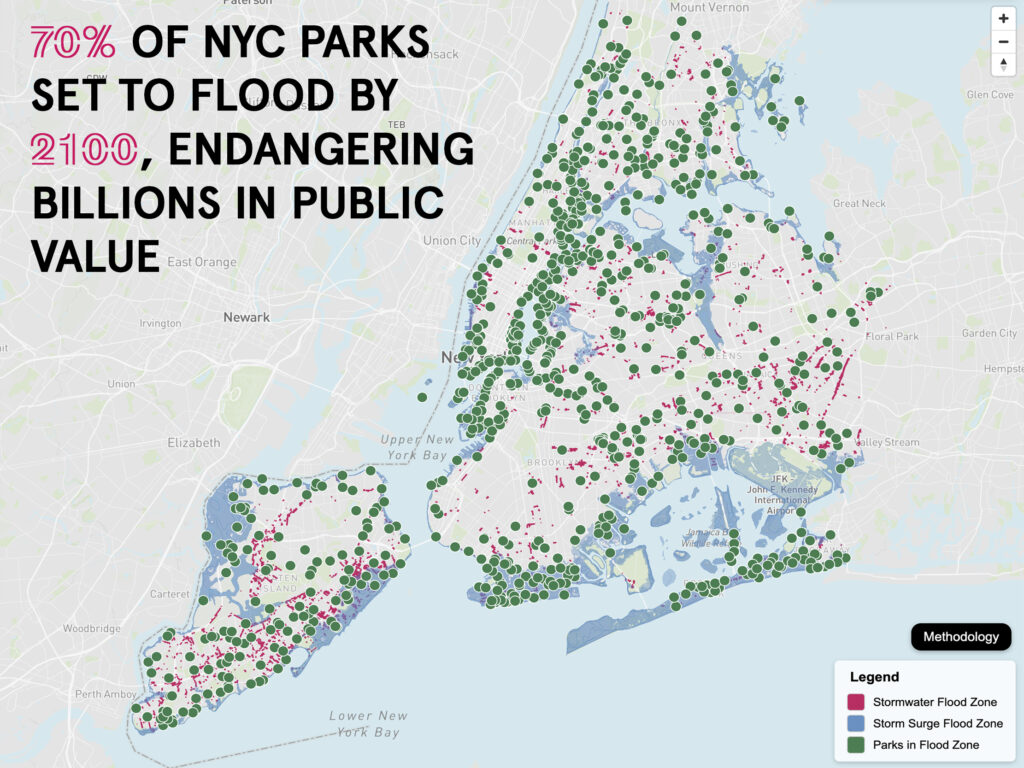RepositioninG Parks as Essential Climate Infrastructure
Climate change is here, but there’s something we can do about it. The answer lies in parks. Across the nation, cities are grappling with recurring urban flooding driven by increasingly intense rainfall events that overwhelm aging drainage systems—causing costly damage to homes, businesses, and infrastructure. At the same time, urban heat islands, especially in areas with limited tree cover and green spaces, push temperatures to dangerous levels, heightening the risk of heat-related illnesses.
Amid these challenges, urban parks present an untapped opportunity as multi-functional climate infrastructure. If we upgrade them with climate-resilient blue and gray infrastructure, like holding tanks and pumps, they can manage stormwater, and protect surrounding communities. Parks can serve as natural buffers against extreme weather if we expand green infrastructure like tree canopy rain gardens, bioswales, and permeable surfaces. During times of crisis parks can be vital social spaces that can double as cooling centers, emergency staging areas, and resource hubs.
For this reason it is crucial that cities invest in park renovations and maintenance, and designate parks as critical infrastructure, just as we do highways and roads. This paradigm shift can also open new pathways to federal and state funding. Investments in flood reduction infrastructure can yield returns as high as $13 for every $1 spent in damages, cleanup, and economic impact. In one case, Hoboken, New Jersey designed its new ResilienCity Park to include infrastructure capable of absorbing floodwaters from the adjacent neighborhood, up to 20 blocks away.
The case for reimagining park design and investment is clear, yet, traditional park funding remains inadequate, often leaving under-resourced communities more exposed to climate risks. Investing in and transforming parks into robust climate infrastructure can reduce the risk to vulnerable populations, strengthen local economies, and improve public health, paving the way for a more sustainable and equitable future.
Since Hurricane Sandy in 2012, Rebuild by Design has worked with communities to reimagine and redesign their parks to meet today’s climate challenges. We’ve seen firsthand that properly designed parks have superpowers to: capture stormwater before it becomes floodwater; serve as organizing hubs in times of disaster; clean and cool our air on dangerously hot days.
Parks Can Save Cities. Parks Can Save Lives.
HOW PARKS CAN FUNCTION AS CLIMATE INFRASTRUCTURE
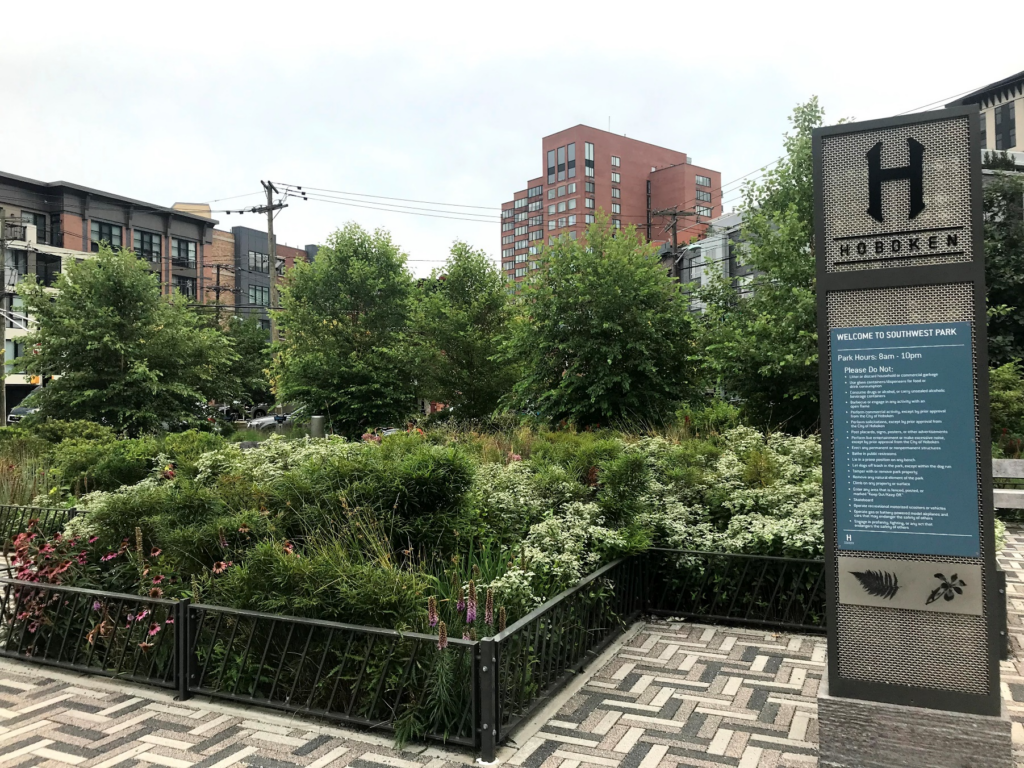
SMART STORMWATER MANAGEMENT
Integrating green infrastructure—like rain gardens, bioswales, and permeable surfaces—into parks significantly reduces stormwater runoff. These natural systems relieve pressure on aging drainage systems and help prevent flash flooding, ensuring that water is managed effectively during heavy rainfall.
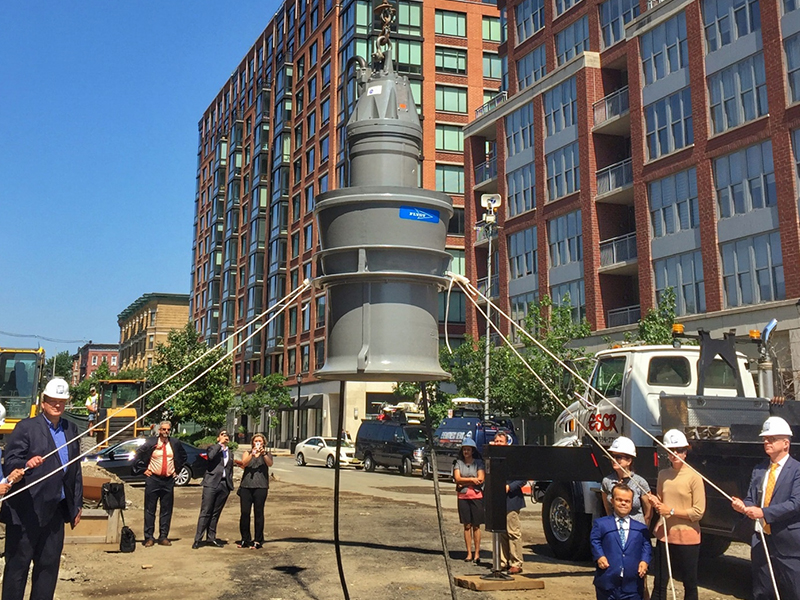
PROTECT HOMES FROM FLOODING
Parks designed as flood infrastructure help keep neighborhoods dry by capturing excess rainwater before it inundates homes. By serving as natural buffers, they reduce the risk of flooded basements, property damage, and even loss of life during severe storm events.
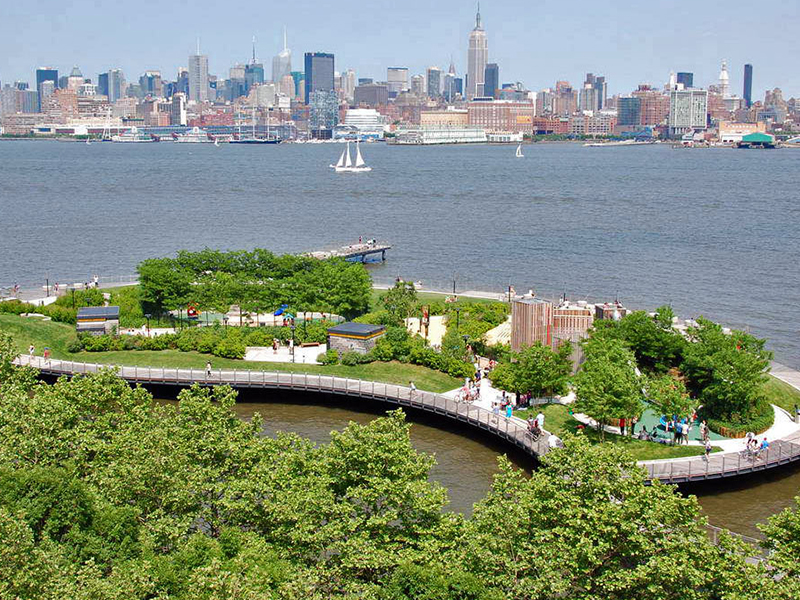
COOLING OUR CITIES
Parks with expansive tree canopies and water features naturally lower surrounding temperatures, mitigating the urban heat island effect. This cooling benefit not only enhances outdoor comfort but also contributes to a reduction in heat-related illnesses and fatalities.
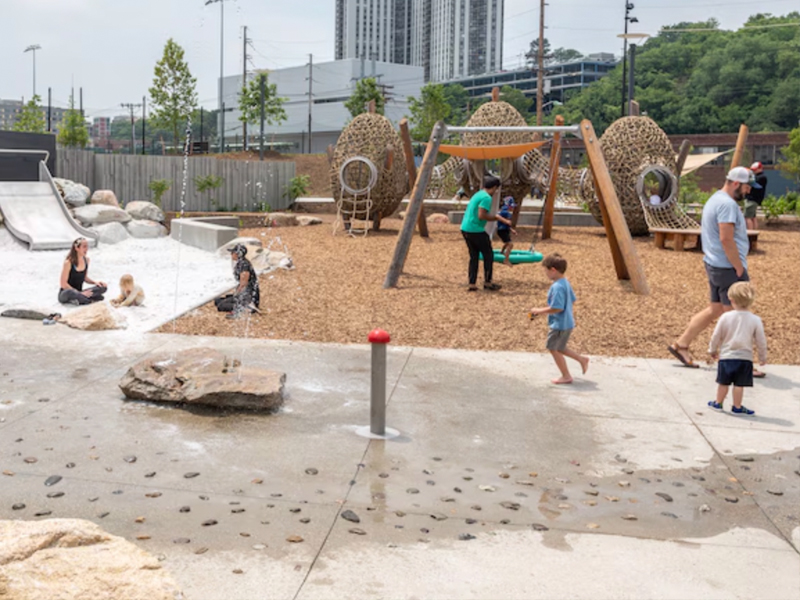
BUILDING COMMUNITY RESILIENCE
Beyond their environmental benefits, parks function as vital community hubs that foster social cohesion and support. During emergencies, these spaces can double as cooling centers, resource hubs, and coordination points for first responders, bolstering the overall resilience of neighborhoods.
ECONOMIC BENEFITS
Investing in parks as climate infrastructure offers significant economic, environmental, and social returns, especially in flood-prone neighborhoods. The 2023 Rebuild by Design and Ramboll report, Blue-Green Infrastructure: A New Business Case for New York City, underscores the potential of blue-green infrastructure as a cost-effective strategy for managing climate risks.
- 2:1 Return on Investment: Every dollar invested in a blue-green infrastructure network designed to handle the 10-year storm in 2050 delivers a 2:1 return on investment, factoring in reduced damages, avoided cleanup costs, and long-term resilience gains.
- Targeted Investment in Flood-Prone Areas: 82% of NYC neighborhoods have a 2:1 payback, for nature-based solutions, emphasizing the cost-efficiency and scalability of renovating existing parks to serve as flood infrastructure.
Wider Cost Savings: Every dollar spent on flood infrastructure can generate up to $13 in benefits through reduced damage and recovery costs, according to a US Chamber of Commerce Study.
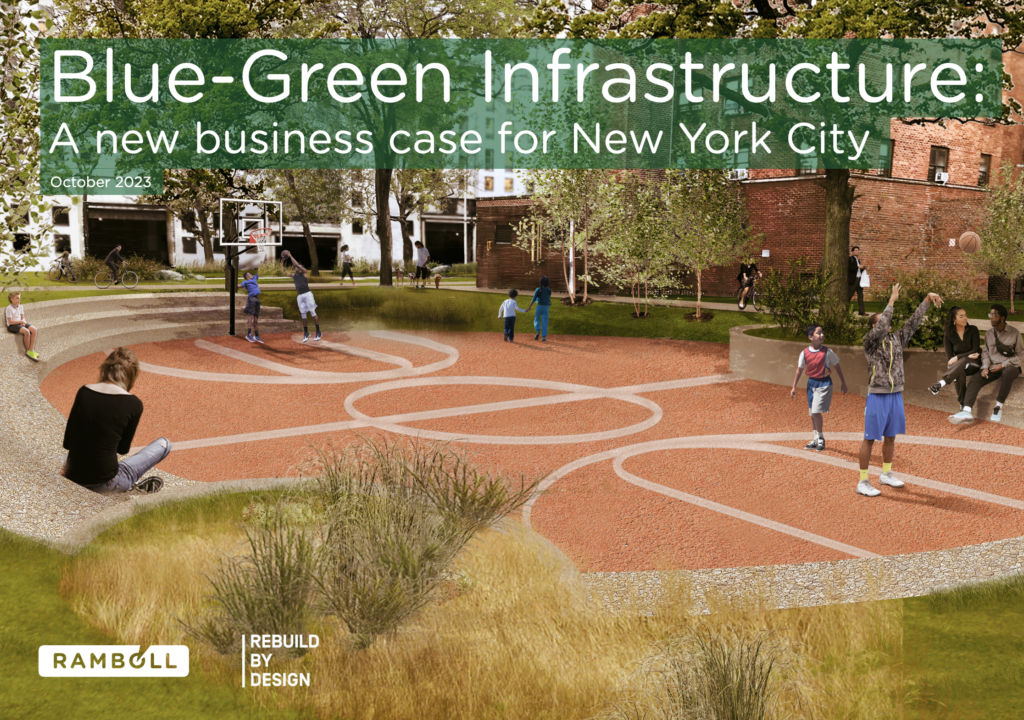
REBUILD BY DESIGN PARKS INITIATIVES
NYC PARKS IN FLOOD RISK ANALYSIS
New York City’s parks are facing unprecedented flood risks as rising sea levels, intensifying storms, and aging infrastructure converge to threaten neighborhoods with increased inundation. Rebuild’s analysis shows that nearly 70% of NYC parks could fall within flood zones by 2100, with several boroughs experiencing dramatic increases in exposure that underscore the urgency for climate-resilient urban planning.
Our analysis identifies 177 high-priority parks across New York City, that fall within current or future floodplains, and have the highest heat and social vulnerability scores. Nearly 60% of these parks are in the Bronx, followed by Brooklyn (25%), Queens (9%), and Manhattan (6%).
SEE FOR YOURSELF: HOBOKEN, NEW JERSEY WALKING TOUR
Hoboken, New Jersey, serves as a compelling example of how urban parks can be reimagined as multi-functional climate infrastructure. Historically plagued by chronic flooding—from heavy rainstorms to the devastating 14-foot storm surge during Hurricane Sandy—Hoboken faced significant challenges in protecting its neighborhoods from water damage.
In response, the city embraced the Rebuild by Design framework centered on four key actions: Resist, Delay, Store, and Discharge. This reinvention of Hoboken’s public realm transformed its parks from recreational hubs to communal spaces that bring people together and safeguard this former flood-prone community for generations to come. As a Rebuild by Design Hurricane Sandy Competition winner, Hoboken worked to build new parks that would increase its capacity to manage flooding events by 88%.
This coastal city has gone from flooding “like a bathtub” to setting a powerful precedent for cities nationwide to protect themselves against extreme weather. Today, Hoboken’s Resilience Parks store 4.2 million gallons of stormwater from rainfall in the surrounding neighborhoods.
